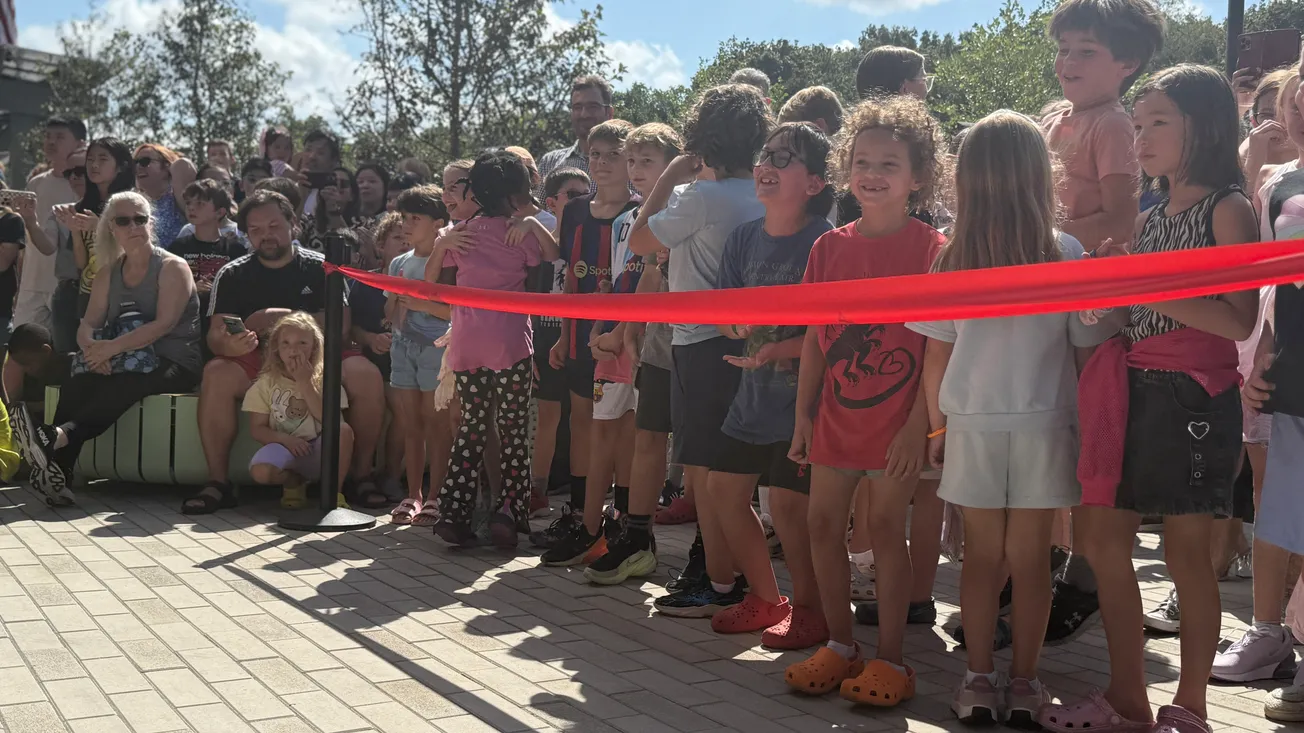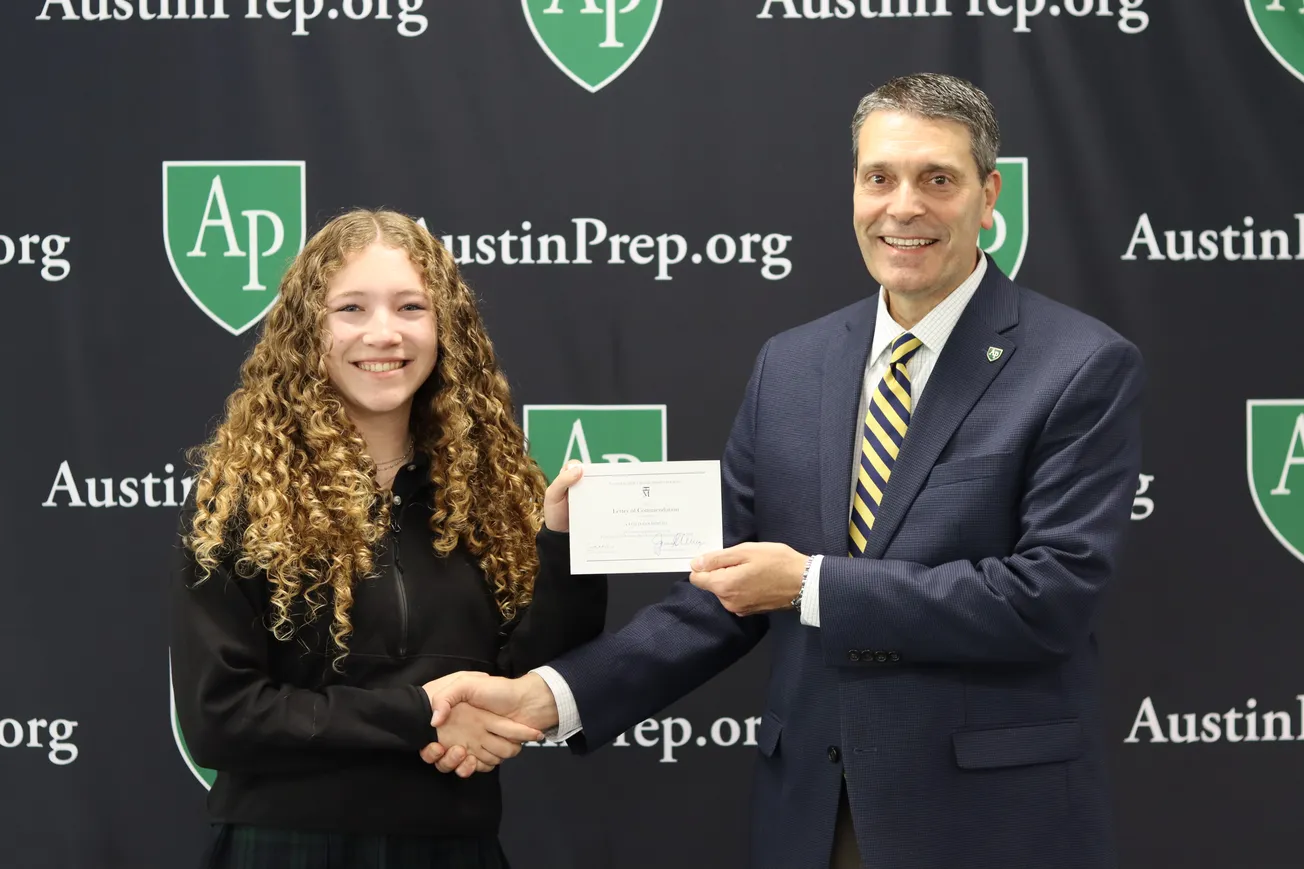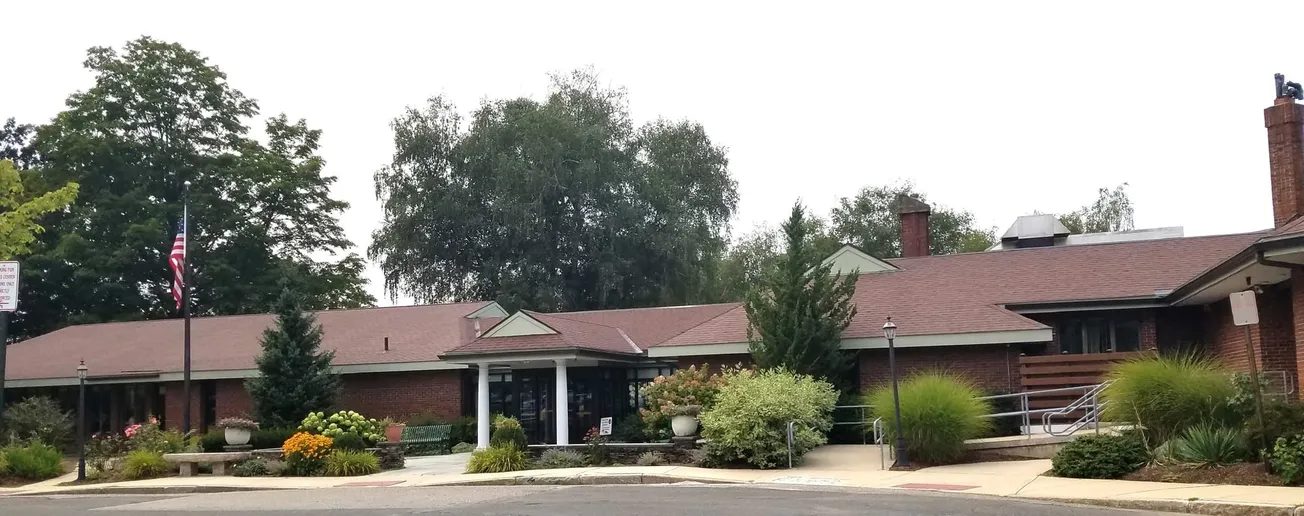Table of Contents
The morning sun cast long shadows across the new universal playground as hundreds of Winchester families streamed through the doors of their community’s latest educational investment Monday morning.
Parents carried toddlers past floor-to-ceiling windows while older siblings raced ahead to test interactive displays in the media center.
After nearly a year and a half of construction, the new Lynch Elementary School welcomed its first visitors during a ribbon-cutting ceremony on Aug. 25 that celebrated both architectural achievement and community commitment.
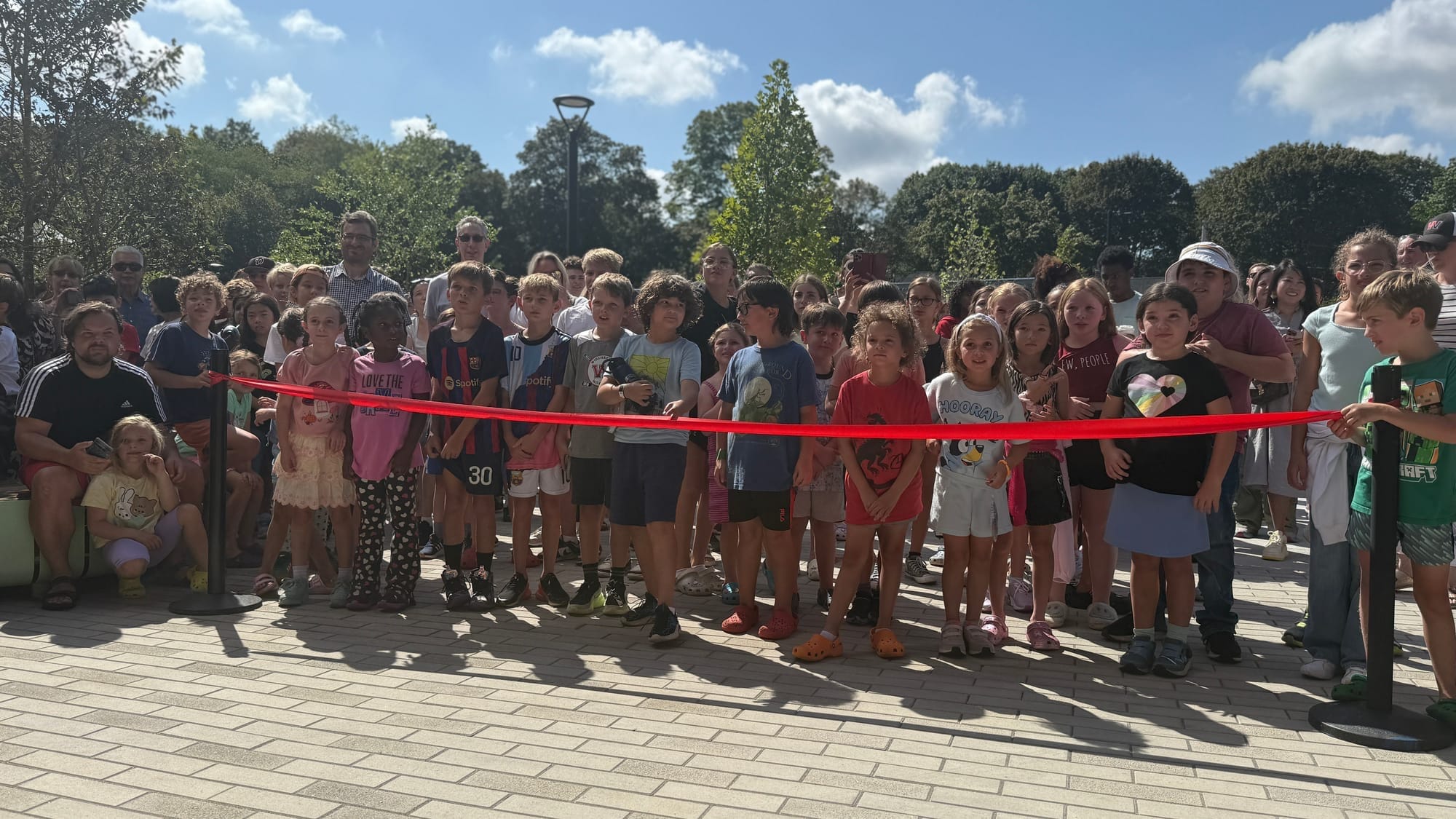
In the building, 27 new classrooms equipped with interactive technology replace the cramped spaces of a 1961 structure originally built as a junior high school. Solar panels crown the building and shade parking areas below, marking Winchester’s transition toward sustainable education infrastructure.
Chris Nixon, vice chair of the Winchester Educational Facilities and Planning Committee, traced the project’s journey from groundbreaking to completion during Monday’s ceremony.
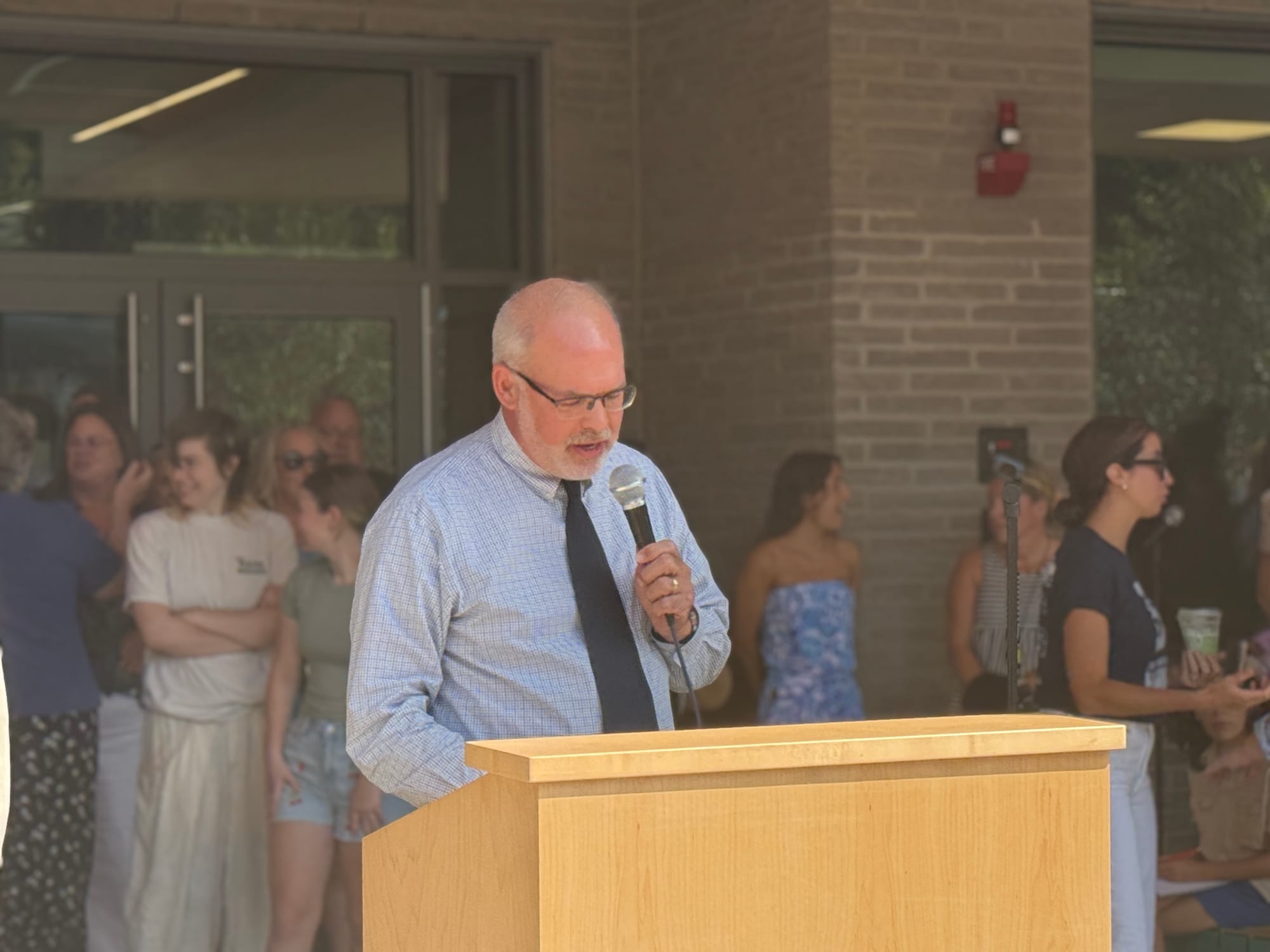
“It’s actually been 519 days since a gray and windy afternoon just over by the brook, when we broke ground on this exciting project,” Nixon said. “And what an exciting project. It is a three-story, 104,000 square foot, all electric elementary school with 27 K-5 classrooms and an expanded preschool.”
The celebration unfolded across multiple levels and outdoor spaces. Families sampled cupcakes decorated with school logos in the bright cafeteria while children explored specialized learning environments. The gymnasium echoed with bouncing basketballs as parents admired the regulation court with its gleaming maple floors.
Principal Chrissy Capodanno, entering her third year leading Lynch and 21st in Winchester schools, reflected on the transformation from the building’s previous incarnation.
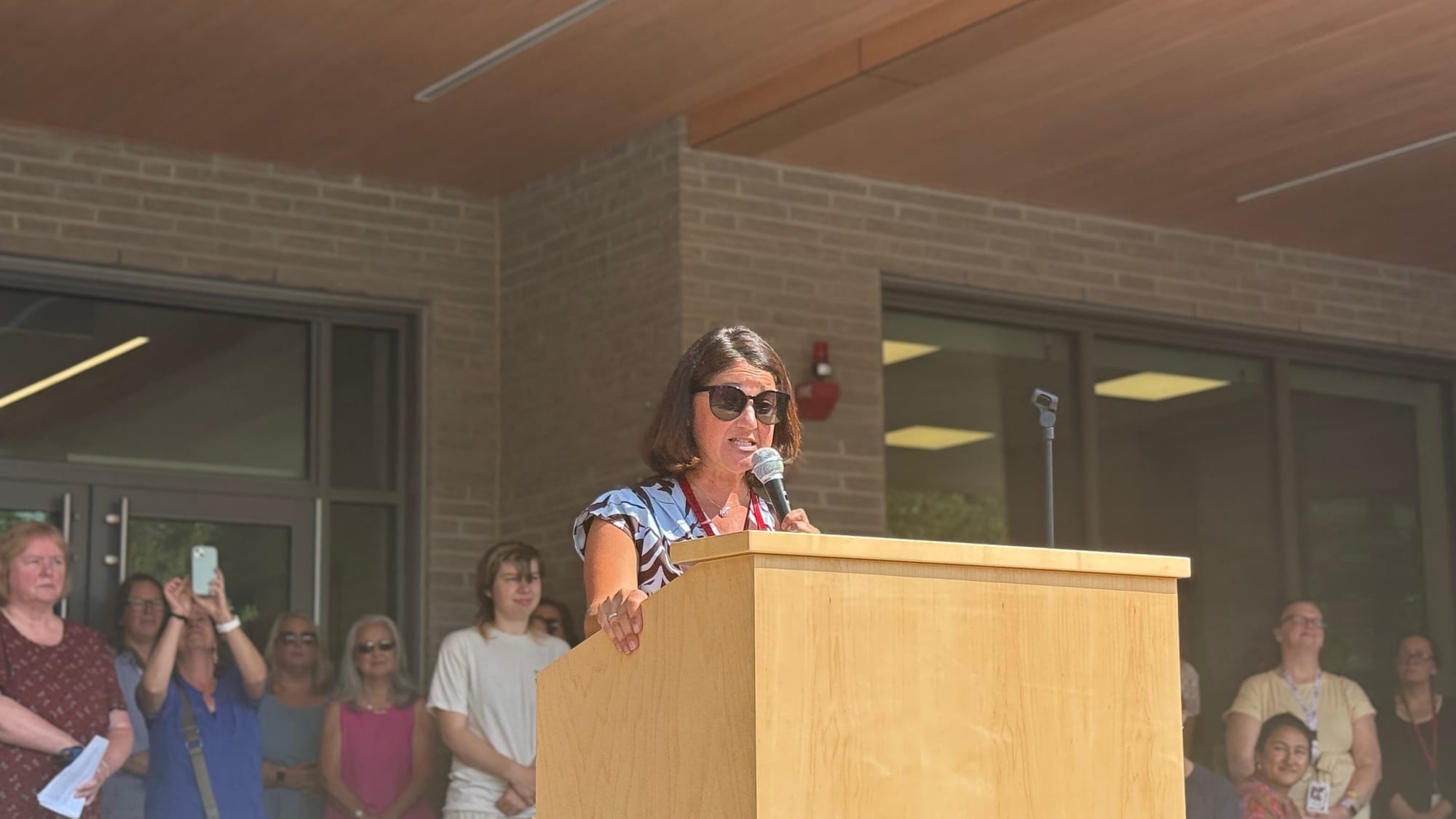
“The old building actually started out as a junior high — I’m not sure exactly when it switched, maybe in the ’80s, to an elementary school,” Capodanno said. “It still had the little lockers and some features that didn’t quite fit, but we made it work, and it was great in its own way. It was big and all on one level, which I really liked. But this new building is on a whole different level — it’s so interactive. We have a STEAM room now, and the media center is just unbelievable.”
State partnership proved essential to the project’s success. The Massachusetts School Building Authority contributed $25.2 million toward construction costs, with Winchester voters approving their local share through a debt exclusion override that passed in January 2023.
Mary Pichetti, executive director of the state building authority, emphasized the collaborative nature of the achievement during her remarks.
“Today marks the third core program project completed in partnership between the town and the MSBA, since the MSBA’s creation in 2004,” Pichetti said. “We are delighted to be here today to celebrate Winchester’s investment in its children.”
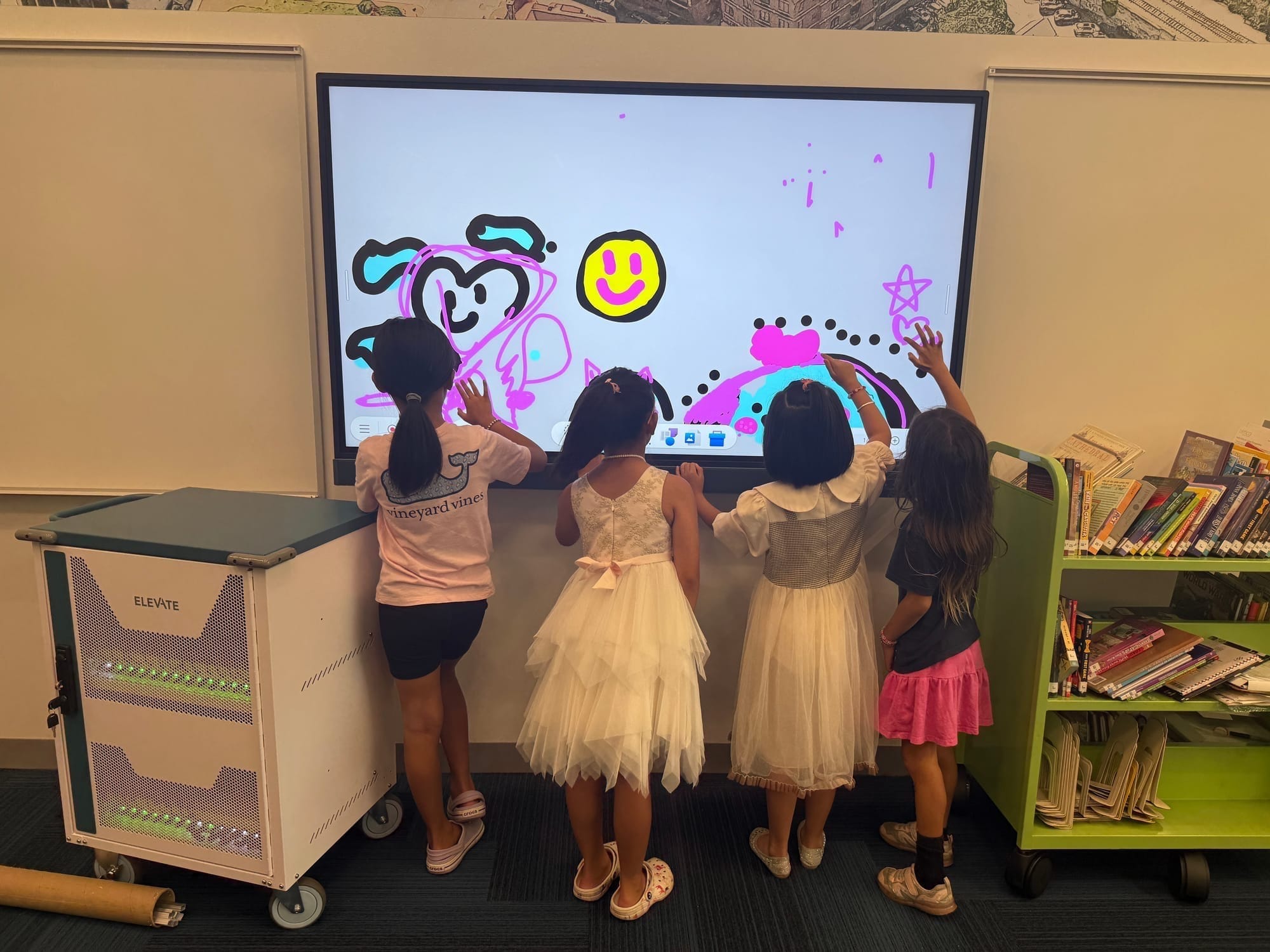
The new facility addresses space constraints that affected specialized programming for years. Preschool classrooms scattered across multiple district buildings now operate under one roof, with bathrooms and fixtures sized appropriately for 3- and 4-year-old learners.
Sarah Casey, the preschool supervisor, described the significance of the consolidation.
“Well, we’ve always had preschool, OK, so we’ve always had it, but we’ve been spread out through the district, and we’ve been moved around, and so for us to all come back together under one roof sure is, I think, pretty special,” Casey said. “Lynch now becomes kind of a preschool through grade five building, but the preschool will still service all five elementary schools in Winchester.”
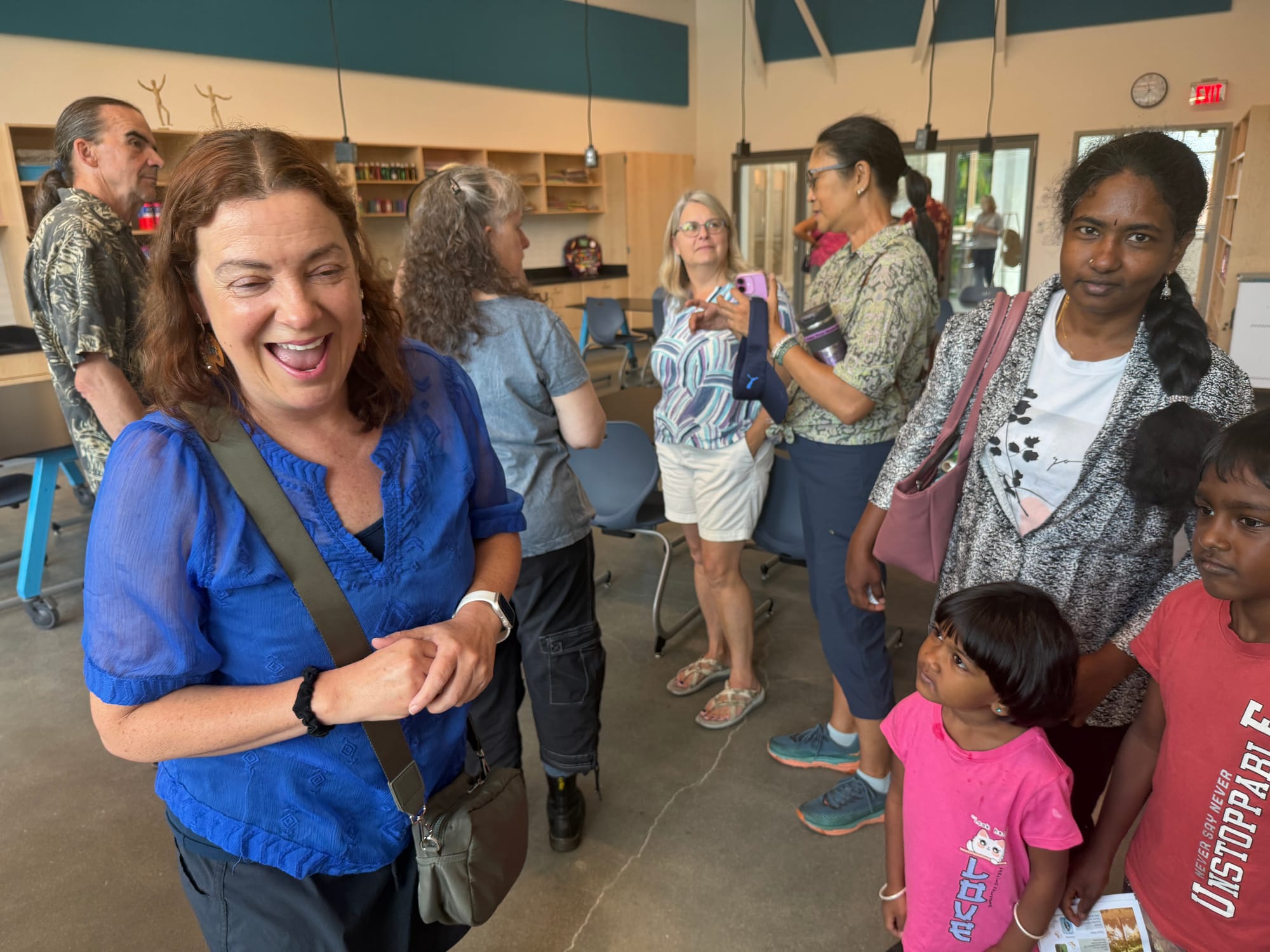
Special education programming also benefits from expanded dedicated space. The autism program now operates four classrooms with specialized teachers and teaching assistants, replacing shared arrangements that limited learning opportunities.
Sara Brothers, who teaches in the autism program serving grades three through five, emphasized the educational impact of adequate facilities.
“A lot of times we had shared spaces, so multiple teachers in one room, which is hard for the learning,” Brothers said. “I think just having enough space for the students to learn is great.”
Enhanced access to specialized spaces allows students to participate more fully in school programming. Where autism program students previously received art and music instruction in their regular classrooms, they now move to dedicated studios.
“We have four autism classrooms,” Brothers said. “It’s nice that we have different classrooms that we can go to. I love it.”
Art instruction exemplifies the facility’s educational improvements. Years of mobile programming, with supplies transported on carts between classrooms, gives way to a dedicated studio with proper equipment and workspace.
Lisa Gualtieri, the school’s art teacher, recalled the challenges of the previous arrangement, living a nomadic lifestyle.
“Last time, I had a beach cart. And I would bring my supplies on a beach cart,” Gualtieri said. “And we were art on a cart, and we didn’t have sinks for water.”
Now she has three sinks, pottery wheels and a kiln, enabling programming previously impossible in the old building. When Gualtieri inquired about basic amenities during the design process, architects exceeded her expectations.
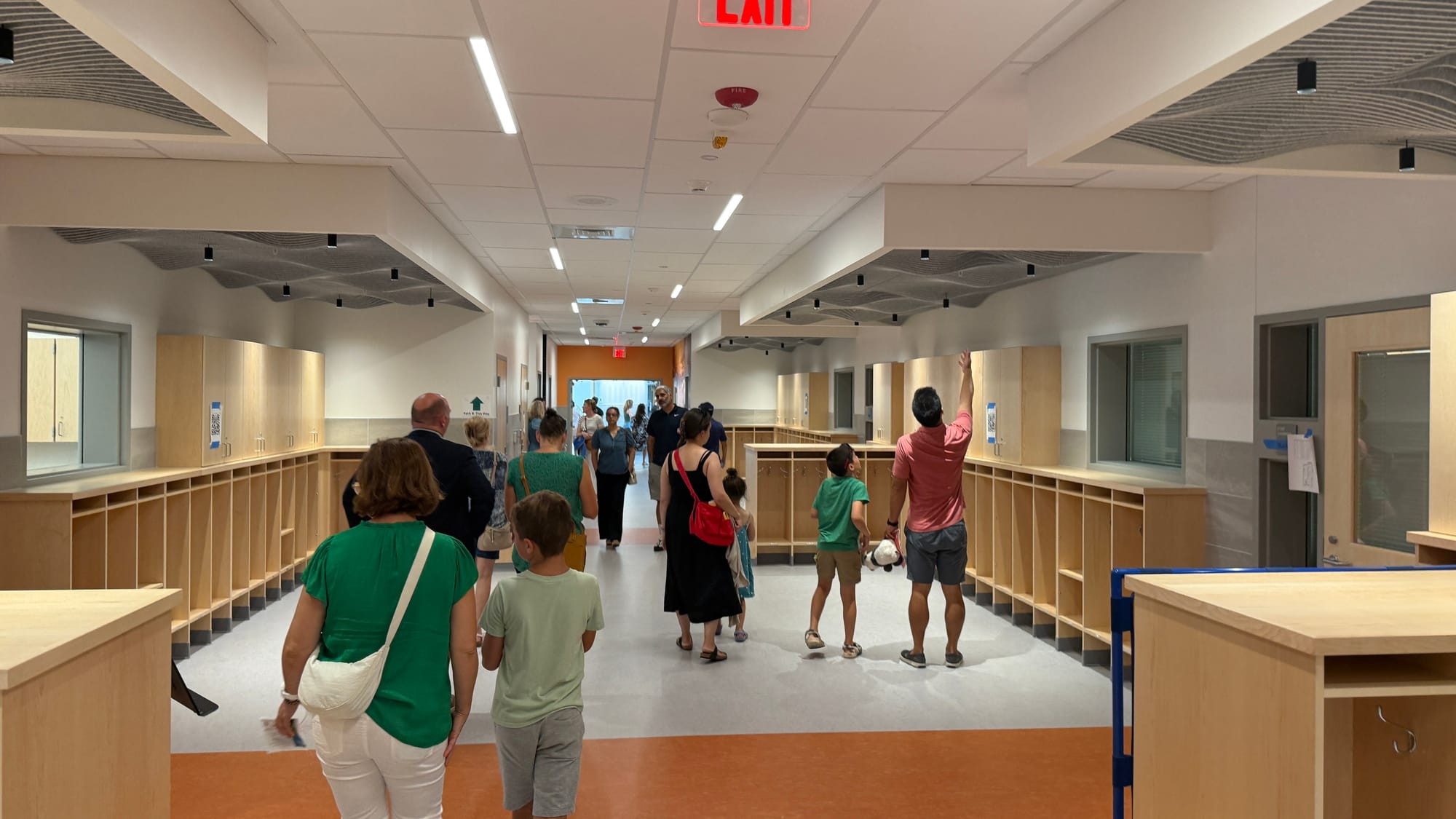
Sustainability features distinguish the building as Winchester’s first all-electric, net-zero school. Solar installations on the roof and over parking areas will generate sufficient energy to offset the building’s consumption, advancing municipal climate goals.
Pichetti highlighted the environmental achievement during her address.
“As Winchester’s first all-electric, net-zero facility, the building will be powered entirely by rooftop and parking-canopy solar panels, as Winchester transitions to a fossil-fuel free future,” she said.
Financial support from the state increased during construction as material costs rose.
“In recognition of the increasing construction costs and thanks to the legislation passed in 2023, in October 2023 the MSBA Board approved an increase to the original grant providing an additional $4.9 million for an estimated maximum grant of approximately $25.2 million towards the facility,” Pichetti said.
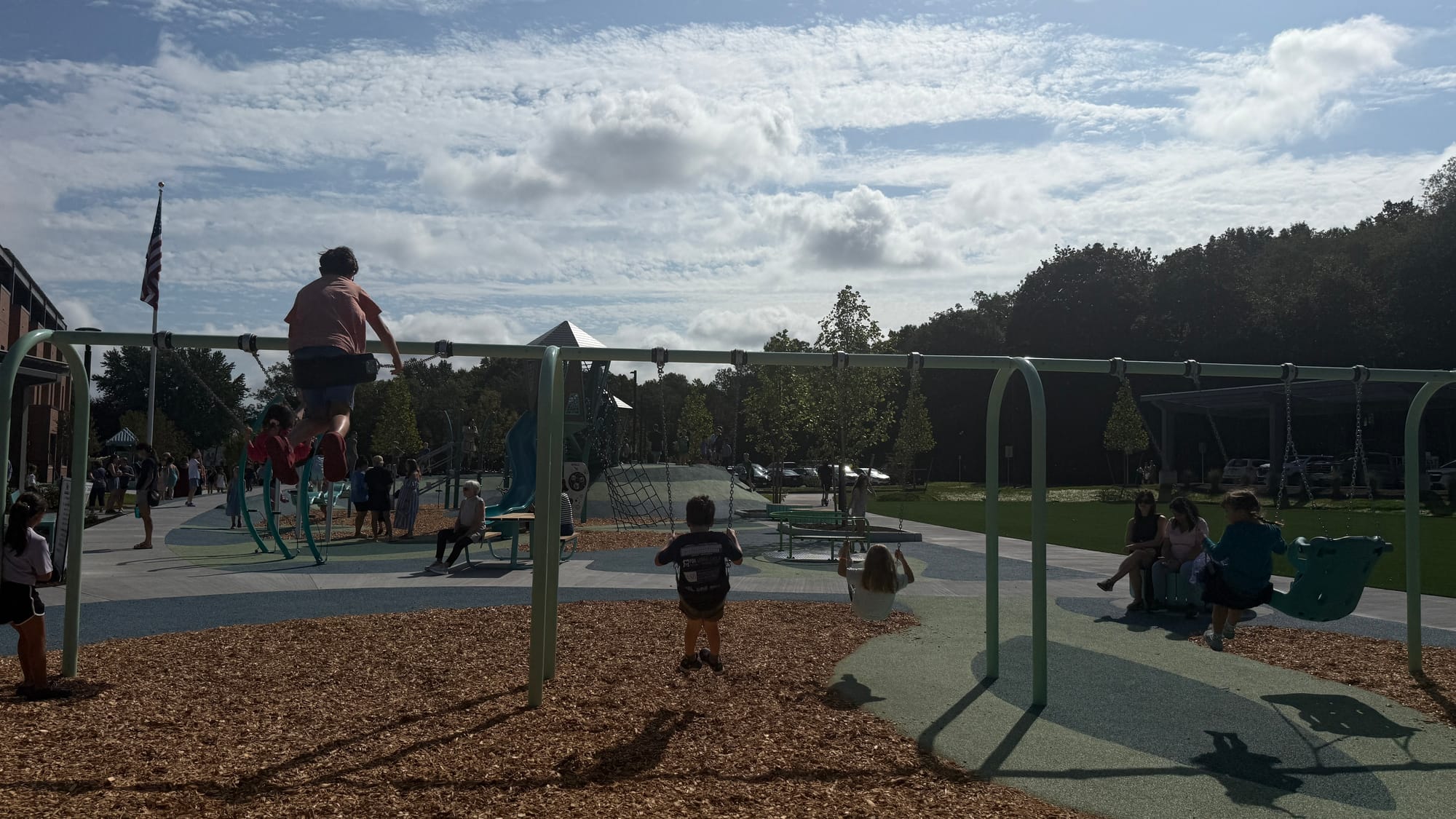
Community support for educational infrastructure has strengthened over successive projects. Winchester voters have approved school construction initiatives with increasing margins, reflecting confidence in long-term planning and fiscal management.
Nixon noted the pattern of growing voter support during his remarks.
“It bears repeating, and I want our MSBA friends to take note that in January of 2011, 59% of Winchester voters said yes to a new Vinson-Owen School,” Nixon said. “Over three years later, 68% of voters said yes to a new Winchester High School. And in January of 2023, 80% of voters said yes to a new Lynch school.”

Alumni perspectives underscore the necessity of replacement. Toure Payton attended Lynch Elementary from second through fifth grades before the building’s limitations became untenable for modern educational standards.
“The only problem that I had with it was the bathrooms,” Payton said of the old school. “It was a really old school, and that came with a certain nostalgia.”
Current enrollment approaches 485 students, with the building designed to accommodate more than 500. Three separate playground areas serve different age groups while maintaining community access through a dedicated public space.
The project represents more than infrastructure replacement. Specialized programming for diverse learners, sustainable design principles and community gathering spaces reflect Winchester’s educational values and environmental commitments.
State officials praised the collaborative approach that enabled the project’s success. Pichetti acknowledged the local teams and contractors who transformed architectural plans into educational reality.

“Our thanks to Winchester and its team, Hill-International, Tappe and Brait, who have worked diligently to create and build a forward-thinking project, committed to project based learning and real-life experiences,” she said.
As Monday’s celebration continued into the late morning, families explored classrooms and corridors that will soon fill with daily learning. Children tested swings on playground equipment while parents gathered in small groups, sharing anticipation for the upcoming school year.
School officially opens on Thursday, Sept. 4.

